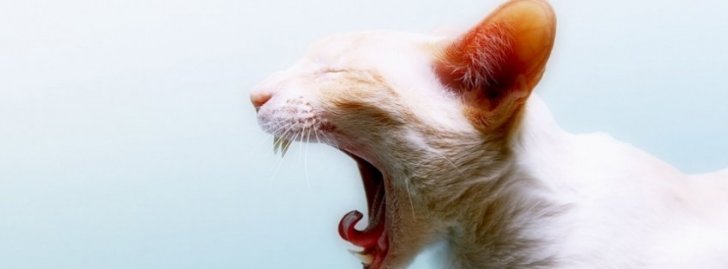(webvet.com) Oral injuries in dogs and cats are relatively common and include injuries to the mouth, gums, teeth, or tongue. Dogs often chew on sticks, bones, stones, furniture, and other items that can crack teeth or result in splinters or shards entering delicate oral tissues. The mouth can also be injured by trauma (eg, hit by car), fight wounds, porcupine quills, bee stings, and other causes. Pets with oral injuries can have difficulty eating (especially hard food), may gag repeatedly, and/or may drip blood from the mouth onto floor surfaces or toys.
The gums blend into the mucous membranes lining the inside of the mouth, cheek, and throat. All of this tissue has a rich blood supply, which means that it bleeds easily but also heals quickly. Small cuts, scrapes, or punctures within the mouth often heal on their own. Larger cuts and those associated with foreign bodies (such as sticks) usually require surgery (under general anesthesia) for treatment and repair.
Fractured teeth are common after chewing on stones, metal, or other hard surfaces, or from trauma to the front of the face. When the hard enamel surface of a tooth is cracked, the delicate, inner structures of the tooth are exposed. This allows bacteria to attack the underlying nerves and blood supply to the tooth, and creates the potential for an abscess to form. Broken teeth are also painful, and the pet may have difficulty eating (especially hard food), which over time can result in poor nutrition and oral health. Therefore, broken teeth often need to be extracted. Alternatively, the tooth can sometimes be saved by a root canal and cap, but this is a more extensive procedure that requires a veterinary dental specialist.
Your veterinarian will perform a thorough examination of the mouth to determine the nature and severity of the injury, and to determine if there are foreign bodies that need to be removed. Because dogs and cats generally resist having their mouth explored, especially when in pain, this examination often requires general anesthesia. If any cuts, punctures, or broken teeth are identified, they can usually be repaired at the same time. X-rays are sometimes needed to look for jaw fractures or for foreign bodies that might be visible, such as fish hooks or bone shards.
Antibiotics are usually prescribed after oral injuries because bacteria in the mouth can invade wounds and lead to secondary infections.
Q&A
What pets are most at risk of oral injuries?
Oral injuries are most common in dogs that chew on sharp, hard, or jagged objects.
Is bleeding in pets common after an oral injury?
Yes, the tissues in the mouth have a rich blood supply, which means that they bleed easily but heal quickly.
How are oral injuries in pets diagnosed and treated?
A thorough oral examination generally requires general anesthesia. Cuts, punctures, or broken teeth can usually be repaired at the same time. X-rays may also be necessary.
Are broken teeth a problem in pets?
A broken tooth can be painful and become infected, leading to a tooth abscess. Such teeth are usually extracted, or a root canal procedure may be done.
¿Do you like the article?Comment and share please!
Fuente: www.webvet.com
